WANTED: Spotted Lanternfly
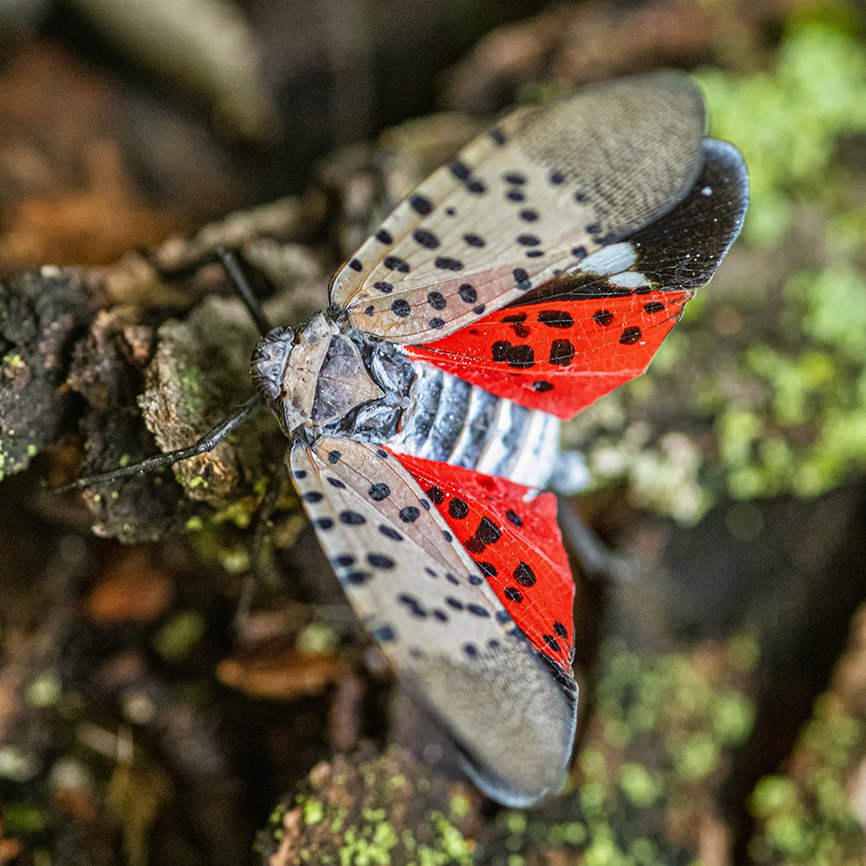
Spotted Lanternfly adult with its wings open. Photo credit: Getty Images
This here insect is about as welcome as a rattlesnake at a square dance, partner!
The Spotted Lanternfly (SLF) is native to China, but was first detected in the United States in Pennsylvania in 2014. By 2018, Virginians reported seeing the pests. The SLF is considered an invasive insect in Virginia because its introduction and proliferation—due in part to its lack of natural predators—can cause harm to native species and economically important agriculture.
In 2019, the Virginia Department of Agriculture and Consumer Sciences enacted a quarantine in Virginia to slow the spread of the SLF. This quarantine focused on unnatural spread by regulating the movement of articles—such as lumber or shipping containers—that are capable of transporting the SLF. Unfortunately, the quarantine can’t prevent the natural spread of the SLF—they do have wings and legs, after all. In the last few years, the SLF has been reported in regions around the state, including heavy infestations in Clarke, Frederick and Warren counties, as well as the City of Winchester.
Now that you’re up to speed, strap in, partner, because we need your help! The US Department of Agriculture is asking folks to smash any live SLF they encounter, and also smash and scrape SLF egg masses. Yes, you read that correctly: the Department of Agriculture wants the SLF dead to prevent further spreading of this invasive insect!
But before you go around swatting and shattering, make sure you’re actually removing the SLF! Here are some need-to-know tips before you get started.
Identify
- Egg mass: Just one SLF egg mass can hold 30–60 eggs! SLF egg masses often look like cracked mud and can be found on tree trunks, branches, rocks or other sheltered surfaces.
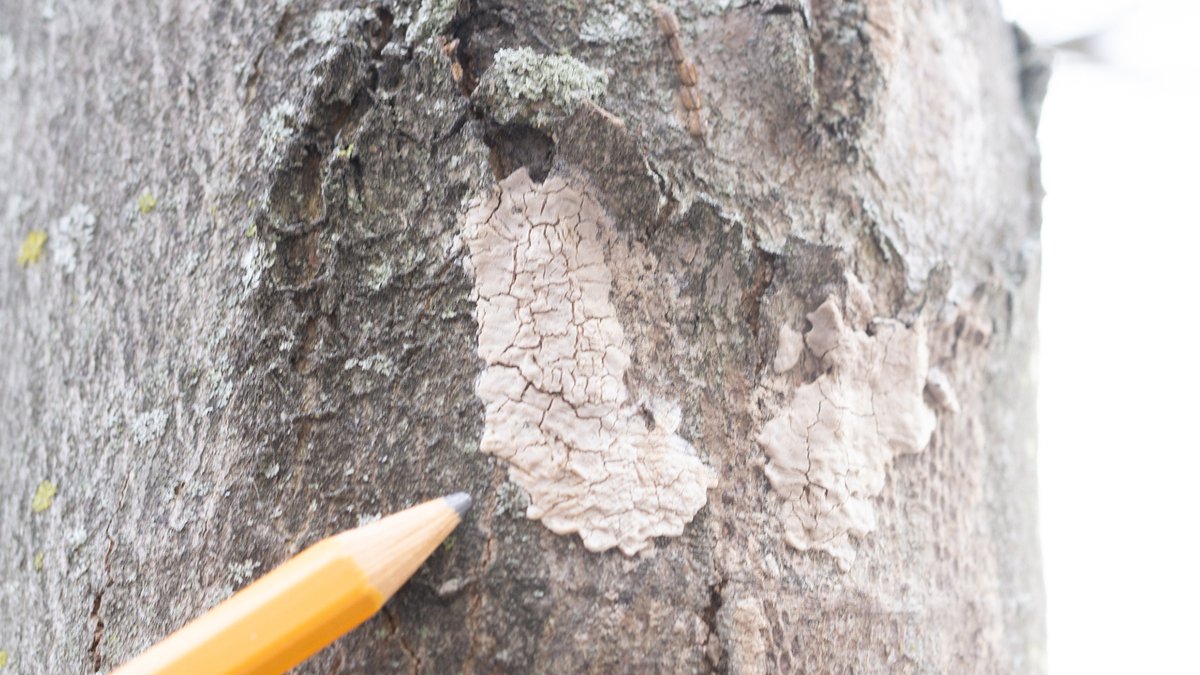
Spotted Lanternfly egg mass. Photo credit: Getty Images
- Nymph: Younger SLF look different from adults, making them more challenging to identify as juveniles. Early nymphs are approximately a quarter-inch long and are black with white spots. Late nymphs can be up to three-quarters-of-an-inch long and are red with white spots and black stripes. None of the SLF nymphs have wings.
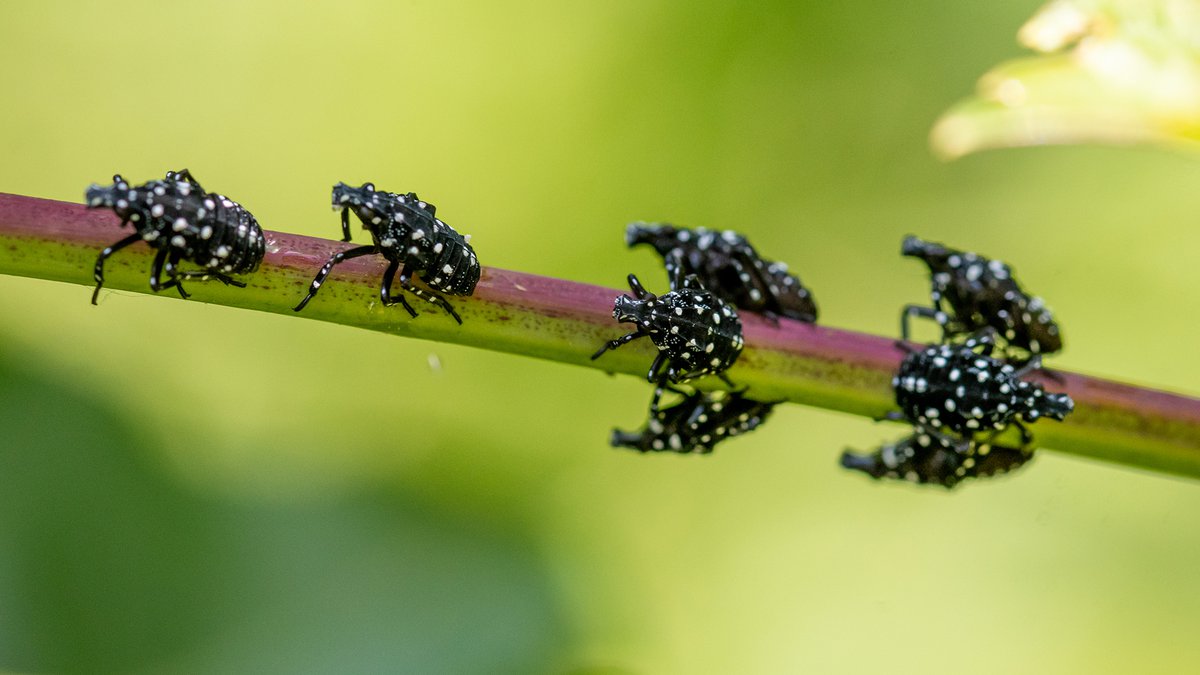
Spotted lanternfly early nymphs. Photo credit: Getty Images
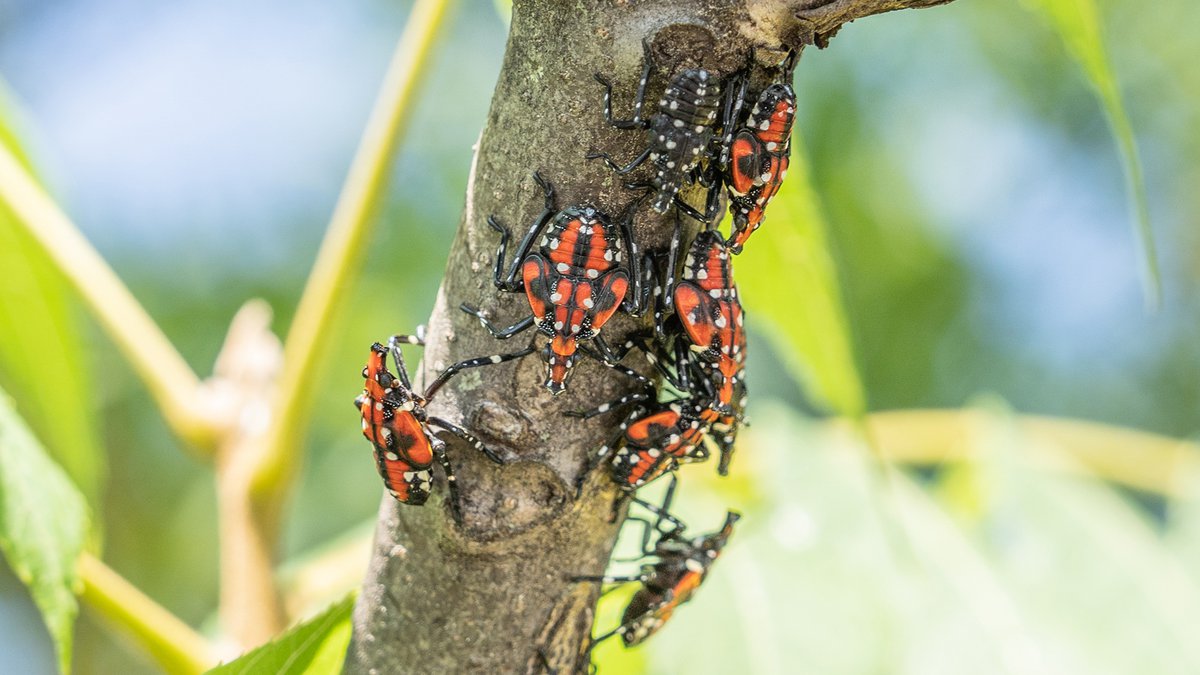
Spotted lanternfly late nymphs. Photo credit: Getty Images
- Adult: With their bright red-spotted and banded back wings, an adult SLF is likely the most easily identifiable. That said, SLF adults walk more than fly, so the distinct red wings aren’t always visible. It’s important to look for black-spotted pinkish-tan wings when the pest is crawling.
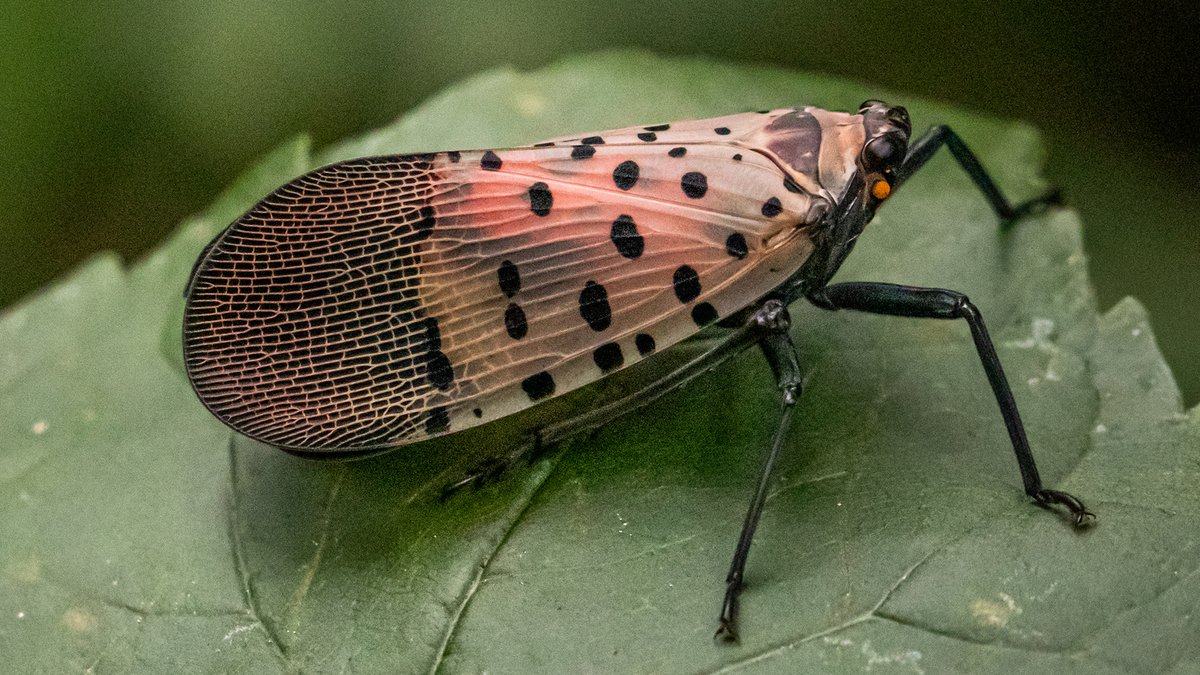
Spotted lanternfly adult with wings closed. Photo credit: Getty Images
Remove
- While it may seem gruesome, the best way to remove SLF nymphs and adults is to smash them completely. For egg masses, the Department of Agriculture recommends using a hard tool to both smash the mass AND scrape it from the tree on which it’s connected.
- The SLF does not bite or sting humans, so do not be afraid to approach it. SLF nymphs and adults are strong jumpers and are more likely to walk or jump than fly away.
Report
- Make note of an SLF sighting, even if you were not able to destroy it, and report your sighting to your local Virginia Cooperative Extension office.
- Better understanding the biology and behavior of the SLF, as well as understanding how they are or are not spreading in Virginia communities, is vitally important to the experts studying them. Researchers can’t be everywhere all the time, so information provided by citizens is key to the data-collection process.
Resources
- Be careful not to harm SLF look-alikes. There are moths, beetles and a handful of other bugs that have similar colors, shapes and sizes but are not considered an invasive insect in Virginia.
- If you have the flowering perennial tree of heaven (Ailanthus altissima) on your property, remove it. Not only is the plant a popular meal for the SFL, it too is invasive. It also emits an offensive odor and produces a toxin that prohibits the growth of vegetation nearby so you don’t really want it around anyway!
- Look out for citizen science reporting projects, which have been held by organizations like Blue Ridge PRISM. Contributing your time and talents for a data collection event goes a long way to prevent the spread of invasive species in Virginia.


